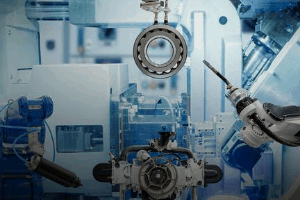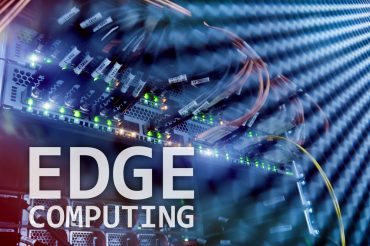
Computing at the edge takes manufacturing to a new level where the edge becomes the source of insights at the machine level, which can drive greater system-level optimization.
Going “to the edge” implies a sense of going into the unknown or to the brink – both daunting thoughts. However, in the industrial space, going to the edge is a logical extension of several technology trends that enable artificial intelligence (AI) and Internet of Things (IoT) solutions, including lower-cost sensors that are robust enough for the industrial environment, cloud solutions that help companies rapidly scale up and scale down their compute and storage as needed, and communications technologies that support increased data transfer at faster speeds. Manufacturers who have gone to the edge with their digital solutions have seen reductions in unplanned downtime, increases in overall equipment efficiency (OEE), greater flexibility in production configurations, and longer-term benefits achieved through the system-level assessment of their operations.
To get to the intelligent factory, operators need the ability to see inside the machine. They need to understand how their actions – and the actions/output of their machines – impact future processing activities. This requires sensors at the machine level to assess machine health and capabilities. And it requires providing real-time insights to the operator – and to the control systems that drive these machines – to create smart feedback loops. Eventually, machines will be linked together to collaborate and share data to create system-level insights.
A self-aware production system has layers of interconnections, but one critical defining feature of such a system is that software drives decision-making. Underpinning this shift is a reliance on systems based on general-purpose compute platforms. Factory managers and operators will no longer be limited by monolithic, proprietary systems. Instead, they will find their multiple pieces of equipment linked to multi-purpose computers that can seamlessly switch software-based functions between equipment, as needed, per the demands of each piece of equipment for data collection, analytics, security, and control.
Compute at the edge not only gives machine operators and factory managers the ability to respond to changes in demand with reconfigurable production systems, thereby increasing production efficiency and optimization at each machine, it takes modern manufacturing one step further. The edge becomes the source of insights at the machine level, which can drive greater system-level optimization.
What does it take to get to the edge? Companies will need to invest in:
1) digital models of the physical world that capture the nuances of their specific processes and equipment involved in production
2) data collection at the machine level – and the cleaning of that data that is often needed before it can be used
3) AI algorithms to analyze this data – many of which need to be trained before they can be used in production-level analysis
4) output mechanisms that put the generated insights into the hands of mission-critical and time-sensitive decision-makers
5) communications and compute infrastructure that balances bandwidth, storage, and compute location to maximize system performance
6) employee training and change management strategies to help operators and managers understand these AI + IoT systems.
Learn more about the benefits and drivers of edge computing in Intel’s new eBook: Increasing Manufacturing Flexibility, Agility, and Cost Effectiveness with Edge Computing.
Learn more about the technologies that are building the future of industry at the online Intel Industrial Summit 2020, September 23-24th. Register now






